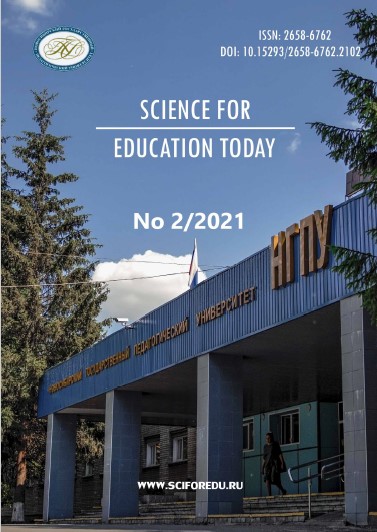Выявление и поддержка одаренных детей средствами сетевого взаимодействия
Identification and support of gifted children within the framework of school-university networks
Author(s): Marina Aleksandrovna Maznichenko, Nataliya Ivanovna Neskoromnykh, Oksana Pavlovna Sadilova, Snezhana Vladimirovna Brevnova, Nadezhda Mansumovna Grigorashchenko-Aliyeva, Vita Alexandrovna FomenkoSubject(s): School education, Higher Education , Methodology and research technology, Sociology of Education
Published by: Новосибирский государственный педагогический университет
Keywords: Gifted children; Provision for gifted children; Evaluation of work with gifted children; Teachers of educational organizations; Support for gifted children; Network interaction;
Summary/Abstract: Introduction. The article examines the potential of school-university partnership programmes for gifted and talented children. The purpose of this study is to determine the mechanisms for identifying and supporting gifted children by means school-university networks. Materials and Methods. To achieve this goal, the authors have reviewed a considerable amount of literature on giftedness, identification and support of gifted children with a focus on establishing school-university networks. A sample of leadership and teaching staff (n = 149) representing 44 municipalities of the Krasnodar Krai (Russian Federation) was surveyed in order to evaluate the effectiveness of identification, support and guidance of gifted students. The analysis of university websites was carried out in order to reveal the existing practices of partnerships with secondary and supplementary education settings aimed at identification and support of gifted children. To solve the revealed problems of gifted education, a model of school-university network encompassing the flagship university and secondary and supplementary education settings has been developed. Results. The study has revealed the following problems of provision for gifted and talented students: unrecognized special giftedness; underestimation of career guidance for gifted students; insufficient attention to social and emotional issues in the development of gifted children; lack of continuity in provision for gifted and talented individuals at different levels of education. The authors propose a model of the network between the flagship university and secondary education settings aimed at solving the above mentioned problems. The research findings include procedures of identifying and supporting gifted children by means of school-university partnership programmes for 9 domains of giftedness (academic (intellectual), technical, entrepreneurial, communicative, leadership, emotional, sports, artistic and vocational) in corresponding types of career-oriented activities (educational, research, scientific; technical design, business design, business communication, management, volunteering, sports, artistic creativity, production) using the facilities and human resources of the flagship university. Conclusions. The conclusion can be drawn that identification and support of gifted children and adolescents must be carried out in close connection with career guidance, taking into account the needs of the regional labor market. Building partnerships of the university, comprehensive secondary schools and supplementary education settings contribute to solving this problem.
Journal: Science for Education Today
- Issue Year: 11/2021
- Issue No: 2
- Page Range: 7-31
- Page Count: 25
- Language: Russian

